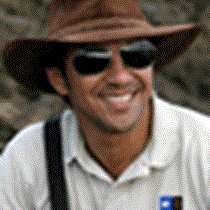We started our morning exploring a location known as Marayali. I don’t even know if this name really exists, or if it is a creation of the locals by joining the two names of the main rivers that creates this vast body of water, The Marañon & the Ucayali! In the end, it didn’t matter where the name came from, as a significant amount of bird wildlife was found while exploring this marshland.
Shortly after breakfast, we disembarked at the settlement known as Amazonas community. The main goal of the morning was to explore and understand the social aspect of the Amazonian region, and what better way to do it than by visiting a village that depends primarily on their own sustainability of fish and fruit production, and the newly developed tourism-oriented small businesses.
This village has approximately 400 people; there is a good mixture of women and men, as well as a fair amount of children and elderly people in every household. Men are mostly dedicated to fishing, and they usually take long journeys of several days on small dugout canoes to find their desired fish. As any place in the planet, things are changing and locals no longer can find the abundancy of resources that once upon a time existed everywhere in this naturally-rich area. The good places for fish are now a few days of rowing upstream, and the commitment has to be made to assure their survival.
The women in the community used to have the sole role of taking care of children and elderly, in addition to cooking and cleaning. This has changed in the last few years due the presence of a constant flow of tourists that occasionally appear at their little town. This has created the business opportunity to sell souvenirs of their own creation. These come in various forms: wood-carved animals, chambira fiber creations, fabric-based paintings, seed-based jewelry, etc. The main idea would be to create something that reflects the life in the jungle for the tourist to take home. As for the payment, it needs to be cash, as the concept of credit cards doesn’t exist in this part of the world. Only few people will use them in the largest cities, but even then, credit cards have not found a place yet within this isolated area. Another good aspect of tourism development, is that it brings awareness. We now know what needs to be improved in these communities, and this is when the NGOs come along. Several of them have come and gone through this region, but only one so far has done the job of empowering women on their strong social role of keeping the communities together. Minga Peru is a non-profit organization created with the whole purpose to teach women about self-sufficiency in remote areas of the Amazon River in Peru. This is how women in this villages have become an active part of the income of the household, giving them decision-making power during town meetings, and even being elected as representatives of their communities elsewhere. The words “rights” and “self-esteem” are spreading wildly, amongst all generations!
And for the children, their lives are a mix of school time and helping both their parents with daily chores assigned every day. Besides going to school whether in their same villages or the next bigger one, their chores are also to go fishing with their fathers or to learn how to use natural colors extracted from roots to saturate the chambira fibers, which are the basic to create animal figures for selling.
And so the life in the Amazon is not only monkeys, macaws and trees, but it is also reflected in the serenity of the sun-tanned faces of the people along the largest river in the world!







